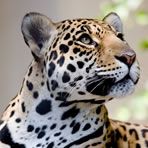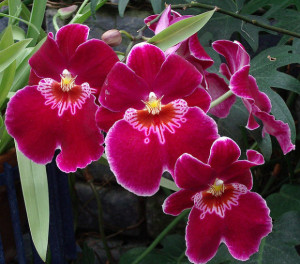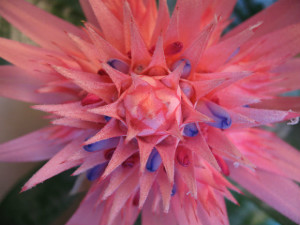Research a biodiversity hotspot and summarize what species live there, where it’s at, if there are any threats to the ecosystem in less than 200 words. Find 4 images of the species that live there and provide a brief 1-3 sentence description. Make sure to cite where you got the images from.
I chose to research tropical rainforests. They can be found in South America, Africa, and Indo-Malaysia. There are over 50 million invertebrate species in the rain forests. Scientists have also identified roughly 2000 plant species that would aid in curing different cancers, but this makes up less than 1% of the total number of plant species in the rain forests. Monkeys live in all rainforests. Bright colors ward off predators because they have found the bright colors associate with that animal or plant being poisonous. Current threats to rainforests are deforestation. Scientists say about a football field sized piece of rainforest is destroyed every second, which translates to about 31 million football fields of rainforest destroyed each year. Deforestation is also causing species to become extinct or close to becoming extinct. Mangrove forests are also being threatened by pollutants such as crude oil, toxic waste, and sewage.
https://wildtracks.wordpress.com/world-ecosystems/forest-ecosystems/tropical-forest-ecosystem/
This is a poison dart frog and are located in South American rainforests. They eat termites, crickets, flies and ants. They live near marshes, streams, and rivers.
http://www.rainforestanimals.net/rainforestanimal/poisondartfrog.html
The ja guar is found in Central and South America. They eat a variety of animals that include turtles and deer. They can grow to be 5.5 to 8 feet long.
guar is found in Central and South America. They eat a variety of animals that include turtles and deer. They can grow to be 5.5 to 8 feet long.
http://www.rainforestanimals.net/rainforestanimal/jaguar.html
This is an orchid found in Central and South America. Some can grow to be large enough that petals are 30 inches long and flowers growing  to 14 feet long.
to 14 feet long.
 This is a Bromeliad found in Central and South America, and one in Africa. This is the similar to pineapples, they are in the same family.
This is a Bromeliad found in Central and South America, and one in Africa. This is the similar to pineapples, they are in the same family.
http://www.ecorazzi.com/2012/02/08/ten-amazing-rainforest-plants/


Hey, my name is Katelyn. The link to my blog is http://sites.psu.edu/geog30/2016/04/13/biodiversity-2/
I love your blog because it dealt with animals and nature! I am a huge animal person and love being outdoors in nature so I really enjoyed reading this. I thought it was interesting on how you researched different animals and plants that live in the biodiversity hotspots. It’s so sad how much of the rainforest is being destroyed due to deforestation. It is not fair to the plants and animals.
Hi Devin, I am Laurene. I enjoyed your post, especially since you included images of some beautiful tropical biodiversity. You have a great understanding of the rainforest, this shows by your explanation of species adaptation and specific threats to the area. I have seen some tropical rainforest in Peru and did not see a Bromeliad. I wish I had since pineapples are my favorite plant. Overall, I think your learning activity is original, no other posts have explored a variety of species. It was short and to the point. Good job!
Similarly I explored the rainforest in my post. I dive deep into an area under deforestation in Peru. You can check it out here: http://geog030.dutton.psu.edu/2016/04/12/56173/